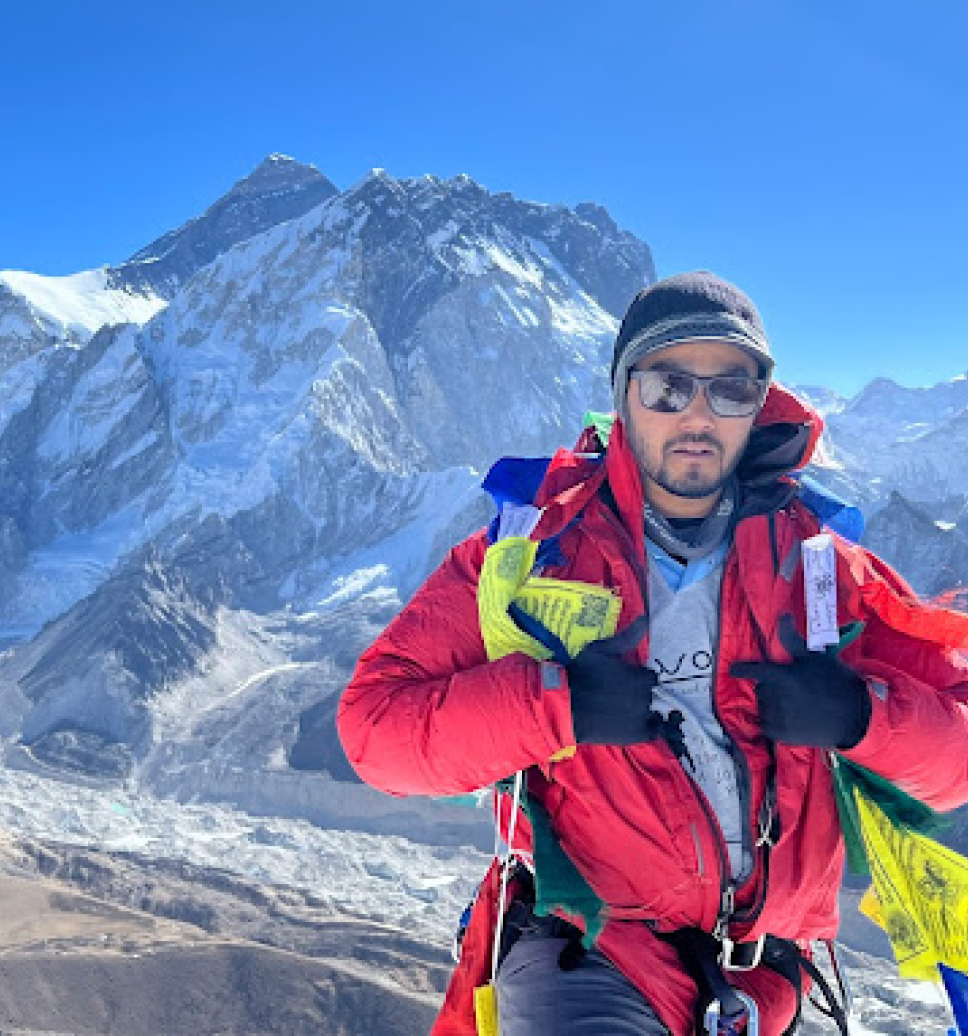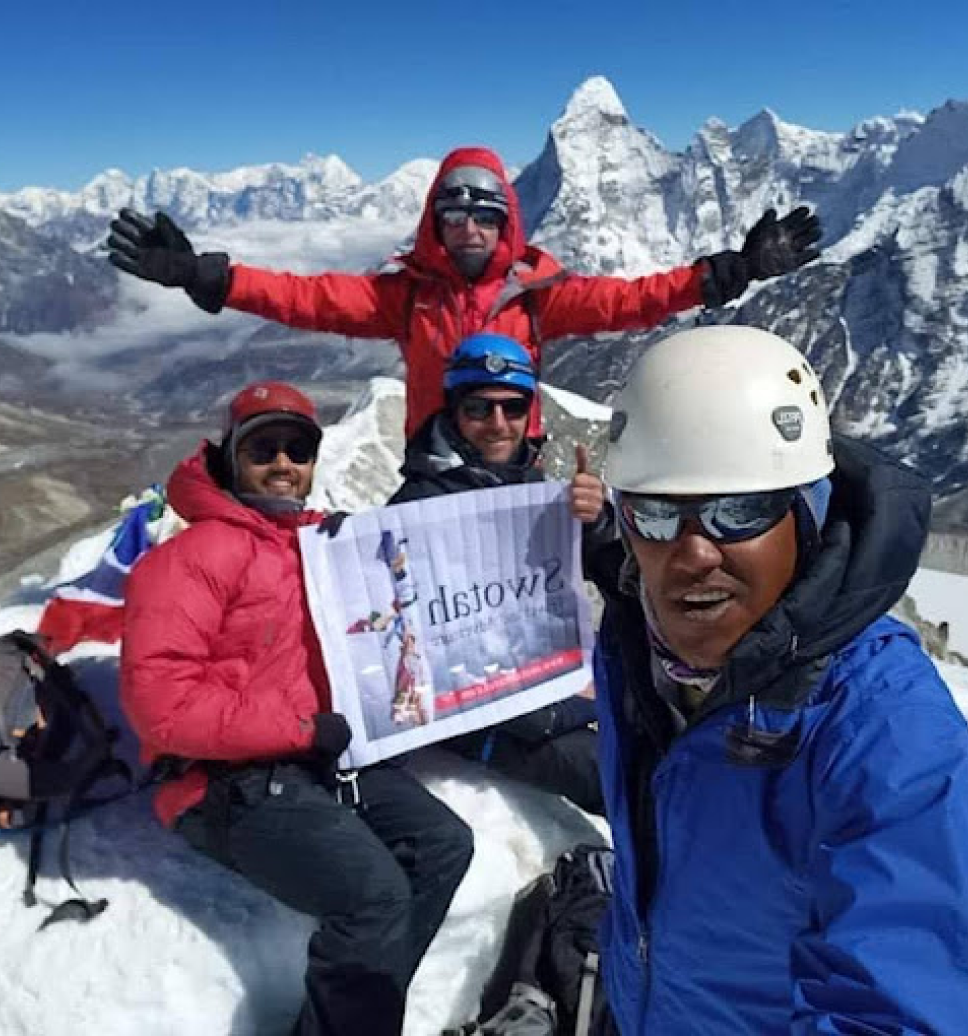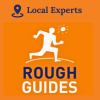GUARANTEED DEPARTURES
Check upcoming trip dates, availability & prices. If you can't see dates that suite you, contact us we will do our best to assist you.
| GUARANTEED DEPARTURES | PRICE | AVAILABILITY | |
| Mar 3, 2026 - Mar 10, 2026 | $2950 | High | |
| Mar 17, 2026 - Mar 23, 2026 | $2950 | High | |
| Apr 7, 2026 - Apr 14, 2026 | $2950 | High | |
| Apr 14, 2026 - Apr 20, 2026 | $2950 | High | |
| May 12, 2026 - May 19, 2026 | $2950 | High |
Trek Highlights
- Reach the summit of Chulu West Peak, one of the highest peaks in the Annapurna region.
- Trek through diverse landscapes ranging from lush valleys to high alpine regions.
- Experience local culture and hospitality by staying in tea houses along the way.
- Cross Thorang La Pass, the world's highest pass at 5,416 meters.
- Witness stunning views of Annapurna II, III, IV, Gangapurna and other towering mountains.

Chulu West Peak climbing is perfect for adventure enthusiasts seeking to challenge themselves while immersing themselves in the natural beauty and rich culture of the Annapurna region. With the guidance of experienced professionals, even climbers with no prior technical skills can safely enjoy the ascent. The breathtaking views, diverse terrains, and warm local hospitality make this a truly unforgettable experience, offering both personal achievement and lifelong memories.
Photo Gallery
Dive into our gallery to get a glimpse of the awe-inspiring vistas waiting for you on our guided treks across stunning landscapes.
Brief Itinerary
Day
1
Arrival
Day
2
Sightseeing in Kathmandu
Day
3
Drive to Jagat
Day
4
Jagat to Dharapani
Day
5
Dharapani to Chame
Day
6
Chame to Pisang
Day
7
Pisang to Manang
Day
8
Acclimatization day
Day
9
Manang to Yak Kharka
Day
10
Trek to Chulu West Base Camp
Day
11
Acclimatization
Day
12
Chulu West Base Camp to High Camp
Day
13
High Camp to Summit to Base Camp/High Camp
Day
14
Extra day in case of bad weather to climb the summit
Day
15
Chulu West Base Camp to Thorang Phedi
Day
16
Trek to Muktinath via Thorong-La Pass
Day
17
Jomsom to Pokhara by flight
Day
18
Pokhara to Kathmandu
Day
19
Departure
Comprehensive Trek Guide
Rising majestically above the Manang Valley, Chulu Peak is divided into three sections: Chulu West, Chulu East, and Chulu Central. Nestled between Chulu West and Chulu East is Chulu Central, a rarely attempted ascent that remains a hidden gem.
Chulu West, located in Nepal's Annapurna region at an altitude of 6,419m, is one of the trekking peaks to conquer. Due to its technical nature, climbers need prior mountaineering experience and proficiency with equipment like crampons, harnesses, ice axes, knot tying, and climbing ropes. For those prepared to take on the challenge, the climb offers an exhilarating adventure paired with breathtaking views.
From the summit, climbers are rewarded with stunning panoramas of iconic Himalayan peaks, including Dhaulagiri, Nilgiri, Annapurna, and more. After the triumphant ascent, the journey continues through the renowned Thorong La Pass, the world's highest mountain, before descending toward Muktinath and Jomsom.
Best Season to do Chulu West Peak Climbing
The best seasons for Chulu West Peak Climbing are spring (March to May) and autumn (September to November). These months offer the most stable weather conditions, enhancing both safety and the overall climbing experience. During spring, the region comes alive with blooming rhododendron forests and clear skies, providing exceptional visibility of the surrounding peaks. The moderate temperatures and the lack of heavy snow make it an opportune time for trekking and summiting.
Similarly, autumn is a highly favoured season among climbers and trekkers due to its mild temperatures, dry weather, and excellent views. The monsoon rains subside by September, leaving fresh, clear landscapes with minimal cloud cover. This season also coincides with Nepal's festive atmosphere, as major festivals like Dashain and Tihar bring vibrant cultural experiences to the region.
Winter and monsoon seasons, on the other hand, are not recommended for this climb. The heavy snow and extreme cold of winter can make the ascent treacherous, while the monsoon brings heavy rain and landslides, rendering trails risky and visibility poor. By choosing either spring or autumn for Chulu West Peak Climbing, adventurers can maximize the potential for a safe, enjoyable, and visually stunning experience in the high Himalayas.
Climbing Difficulty on Chulu West Peak
Chulu West Peak is classified as a challenging climb due to its high altitude, technical sections, and demanding physical requirements. While it does not necessitate advanced climbing expertise, prior mountaineering experience can significantly enhance safety and success. Trekkers should be in excellent physical condition, as the climb involves steep ascents, rugged terrain, and long trekking days. The drastic elevation changes also require adaptability and prior experience at high altitudes to reduce the risks of altitude sickness.
The technical aspects of this climb include navigating ice and mixed terrains, using mountaineering equipment such as crampons and ice axes, and being proficient in rope handling and knot-tying techniques. Some sections of the ascent require fixed ropes, particularly in steeper and icy areas, demanding good balance and stamina. Steep snow slopes, exposed ridges, and icy patches add to the level of difficulty, making this an ideal adventure for those looking to test their limits. Though it is doable for individuals with no technical skills, rigorous training and adaptability are essential for a safe and successful ascent.
Another significant challenge during the Chulu West Peak climb is the risk of altitude-related illness, given that the summit reaches 6,419 meters above sea level. Proper acclimatization is a critical part of the itinerary, with rest days and gradual elevation gain designed to minimize risks. Trekkers must remain aware of symptoms such as headaches, nausea, and shortness of breath. The guidance of experienced Sherpas and trained guides is invaluable in these situations, as they help ensure climbers adapt well and follow safety measures for a healthy climb.
Climbers should also prepare for unpredictable weather conditions in the high Himalayas. Sudden snowstorms, strong winds, and extreme cold can pose risks and require flexibility in planning. Essential items such as thermal layers, windproof jackets, sturdy boots, and insulated gloves are crucial for combating the harsh climate. Comprehensive preparation, including fitness training, equipment checks, and mental readiness, is key to overcoming these obstacles.
Travel Insurance, Safety, Tipping, and Climbing Success Rate
When preparing for Chulu West Peak Climbing, proper travel insurance is essential and should cover high-altitude trekking and climbing. Due to the remote and demanding nature of the region, insurance must include emergency evacuations, medical expenses, trip cancellations, and lost baggage. Helicopter evacuation is especially crucial for emergencies like altitude sickness or severe injuries. Climbers should review their policy to ensure it covers altitudes up to 6,500 meters and fully understands the terms before starting the expedition.
Safety is the top priority on such an intense adventure. Skilled guides and Sherpas are key to ensuring climbers' security, handling challenges like unpredictable weather, equipment issues, or route changes, and effectively managing altitude sickness.
Tipping is another integral part of the trekking and climbing experience. Expressing gratitude to guides, porters, and Sherpas for their dedication, expertise, and hard work is customary. While tipping is not mandatory, it is deeply appreciated and encourages continued high-quality support from the local team. The amount varies depending on the duration of the expedition and the group size, but generally, a collective group tip is divided among the team members before departure. Coordination with other climbers in the group can make tipping both efficient and meaningful.
Swotah Travel has maintained a perfect success rate in climbing Chulu West Peak. Our team of experienced Sherpas and travel planners create the best itineraries, taking into account the latest trail updates. We prioritize proper acclimatization and provide top-notch support throughout the journey. While good weather is crucial, a professional team ensures your safe ascent to the summit.
Are guides necessary for climbing Chulu West?
To issue a permit for the Chulu West Peak climb, you are required to go through a registered local company. This process ensures that climbers are adhering to safety protocols and supporting the local economy. As part of this requirement, guides must be hired for the climb. For beginner to intermediate climbers, we strongly recommend climbing with an experienced guide, as they can provide crucial support and expertise to ensure your safety and success.
The usual climbing route includes a crevasse, and each climbing season may introduce new hazards due to changing environmental conditions, making the presence of a guide even more valuable.
Even experienced climbers or guides who wish to explore new, less-travelled routes are still legally obligated to be assigned a local guide. However, they may choose to interact with them minimally during the climb. Ultimately, guide assistance is not just a legal formality but an important measure to promote safety and sustainable climbing practices in the region.
Permits Required to climb Chulu West Peak
Climbing Chulu West Peak requires multiple permits, all of which must be obtained through a registered trekking agency. The first essential document is the Annapurna Conservation Area Permit (ACAP), as the peak lies within this conservation area. This permit ensures that climbers respect and help preserve the area's natural and cultural heritage. Additionally, a TIMS (Trekkers' Information Management System) card is mandatory for monitoring trekkers in the Annapurna region, enhancing safety and ensuring responsible trekking.
Another critical document is a special climbing permit for Chulu West Peak issued by the Nepal Mountaineering Association (NMA). This permit is specific to mountaineering activities and varies in cost depending on the season-spring is the most expensive and winter the least. Climbers must also follow all policies and regulations set forth by these permits, as they aim to maintain safety and minimize ecological impact in the region.
It is advisable to work closely with your trekking agency, like us, to ensure all permits are properly arranged in advance. The documentation process can seem overwhelming, but with professional guidance and support, all necessary paperwork can be quickly completed, allowing climbers to focus on preparing for the adventure ahead.
Detailed Itinerary
Meals: Dinner
Accommodation: Hotel
Meals: Breakfast
Accommodation: Hotel
Meals: Breakfast,Lunch,Dinner
Accommodation: Guesthouse
Meals: Breakfast,Lunch,Dinner
Accommodation: Guesthouse
Meals: Breakfast, Luch, Dinner
Accommodation: Guesthouse
Meals: Breakfast, Lunch, Dinner
Accommodation: Guesthouse
Meals: Breakfast, Lunch, Dinner
Accommodation: Guesthouse
Meals: Breakfast, Lunch, Dinner
Accommodation: Guesthouse
Meals: Breakfast, Lunch, Dinner
Accommodation: Guesthouse
Meals: Breakfast, Lunch, Dinner
Accommodation: Guesthouse
Meals: Breakfast, Lunch, Dinner
Accommodation: Guesthouse
Meals: Breakfast, Lunch, Dinner
Accommodation: Camping
Meals: Breakfast, Lunch, Dinner
Accommodation: Camping
Meals: Breakfast, Lunch, Dinner
Accommodation: Camping
Meals: Breakfast, Lunch, Dinner
Accommodation: Guesthouse
Meals: Breakfast, Lunch, Dinner
Accommodation: Guesthouse
Meals: Breakfast, Lunch, Dinner
Accommodation: Guesthouse
Meals: Breakfast, Lunch, Dinner
Accommodation: Hotel
Meals: Breakfast
Accommodation: N/A
What's Included
- Airport transfers by Private Vehicle.
- Standard/Deluxe rooms in Kathmandu on a twin/double sharing basis with breakfast.
- Guided sightseeing tour in Kathmandu.
- Accommodation during trek (or camping in case of need).
- All meals (Breakfast, lunch, dinner) during the trek.
- Authorized English-speaking guide/Sherpa along with required Porters(2:1) for the trek.
- Kathmandu to Besisahar and Pokhara to Kathmandu transfer.
- Equipment clothing for porters, including their insurance.
- All applicable government tax.
- All expenses for all staff –meals, accommodation, salary, equipment, insurance, transportation.
- All necessary paperwork and climbing permit.
- Medical kit (carried by your trek leader).
What's not Included
- International flights; Nepalese visa fee.
- Extra night accommodation in Kathmandu and Lukla because of early arrival, late departure or early return from the mountain due to any reason other than the scheduled itinerary.
- Lunch and evening meals in Kathmandu.
- Travel and rescue insurance.
- Tips for Porter(s),Driver(s) and Guide(s).



















